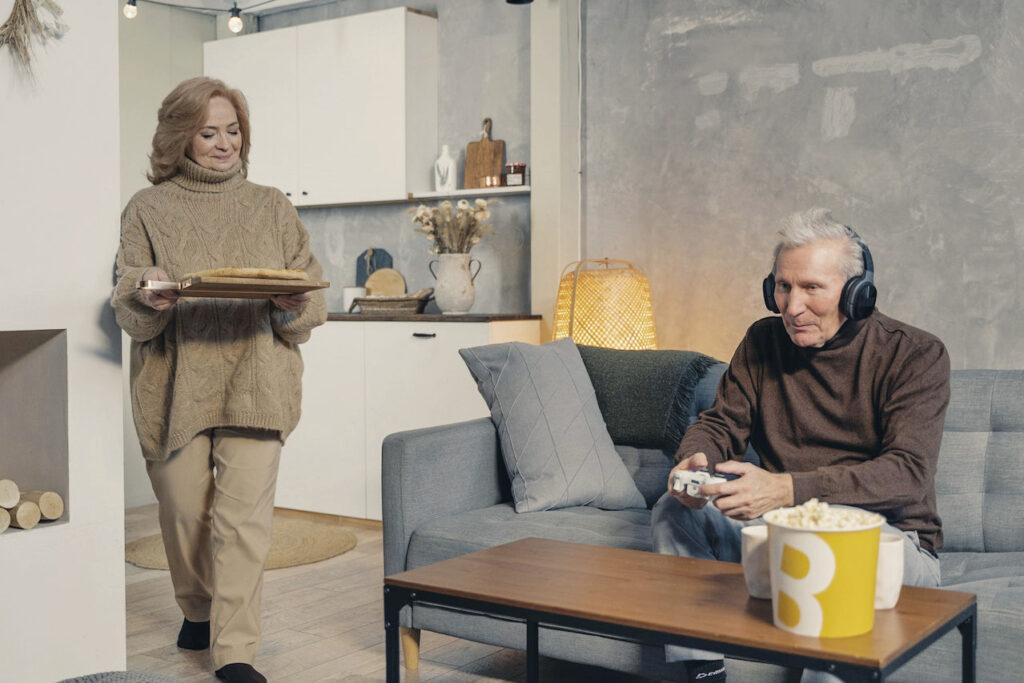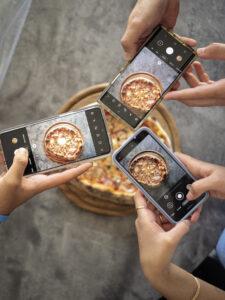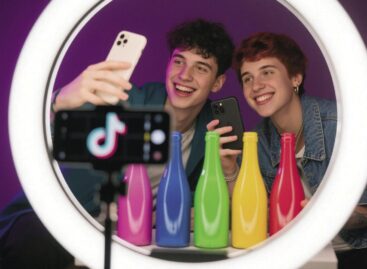Euromonitor International: top 10 global consumer trends in 2023
Every year Euromonitor International publishes its forecast of global consumer trends, which seeks to assist companies in staying one step ahead of the disruption, seeing the shopping motivations of consumers in advance, and based on this being able to satisfy the emerging new consumer needs.
Authentic automation
Although digitalisation dominates in every market, technology can’t eliminate the human factor. Machines bring comfort and speed into our lives, but we shouldn’t underestimate the power of emotional connections. Quick and seamless experience – this is what consumers want today, who wish to save time and money, therefore they are attracted by solutions that are instant and comfortable. In line with these trends, certain manual tasks can be replaced with automation, e.g. smart devices can sense and signal if stocks are running low. Authentic automation can be beneficial if a business wants to be financially successful and productive.

A manageable workload, fair pay and transparent communication can increase employee engagement
Budgeteers
Inflation and rising prices undermine the purchasing power of consumers, making them rationalise their spending. Enterprises must pick solutions that work in both cost cutting and saving money. Everything is becoming more expensive and shoppers must decide: will they spend more on FMCG products, switch to cheaper alternatives or stop buying certain products? Affordability and promotions often matter more today than brand loyalty. There is great pressure on businesses as well. The profit margin is diminishing and certain players are forced to quit. Rationalising the product selection, regularly reviewing the pricing strategies, modifying investment plans and optimising the supply chain are all steps that need to be taken, as a reaction to new shopping habits.
Control the scroll
Although internet use is increasingly conscious, consumers are still wed to their devices. They try to prevent wasting too much time in front of their screens by centralising their platform use. In order to help them in these efforts, firms have the opportunity to refine the digital experience they offer, with efficient and integrated capabilities. The majority of consumers don’t plan to cut down on their screen time, but they select where they spend their time with much bigger care. By monitoring consumer behaviour all the time, customer-focused brands can learn how shoppers use their apps or websites. Relying on this data, they can develop intuitive platforms and web pages for them.
Eco economic
During the pandemic safety was more important than sustainability. Thanks to the lockdowns air quality improved, and there were other positive environmental changes too. Today cost cutting and economising are prioritised, and consumers are switching to energy-saving products, they are cooking at home, using less electricity and travelling less. The dynamics of the market gave new impetus to green practices such as having broken devices repaired, buying used products and renting. Circular business models represent an eco economic opportunity. As regards sustainable products, costs constitute the biggest challenge.

In the midst of the cost-of-living crisis, consumers are approaching sustainability in new ways
Game on
Today computer games are one of the most frequent forms of entertainment, and gaming has already started transcending the generational divide, too. This really questions the gamer stereotypes of the past. Companies can use the popularity of gaming to win new customers. Enterprises have realised the great potential in computer games for generating revenues and reaching consumers. Leading brands are signing multiannual sponsorship deals with game franchises and elite players, developing products exclusively for these platforms. These virtual communities provide brands with excellent targeting opportunities.

Classic gamer stereotypes are nowadays being strongly challenged
Here and now
Consumers like to enjoy life. They are making responsible financial decisions, but when it comes to buying discretional products, they tend to think in the short term. Putting it briefly: joy is a purchase motivator. When a business launches a campaign, it is a good idea to target special occasions. Alternative payment methods can also help to manage spending in terms of time, at the same time offering the chance to get something instantly. Creative campaigns building on spontaneity and timeliness can be really attractive to consumers, e.g. pop-up stores, flash sales, limited time offers. The “buy now, pay later” (BNPL) model can make shoppers feel more comfortable when purchasing something that is quite expensive.
Revived routines
Life has returned to normal after the pandemic and this also means that consumers now manage their time differently; in spite of the uncertainties in many fields of life, they want to keep going forward in life. It is best if firms prepare for a surge in out of home consumption – they need to entertain and assist consumers in living a normal life again. As part of this trend, the new habits people developed during the pandemic are combined with their desire to return to the times when everything was simpler. When there are big changes, marketing managers are in the best situation for acquiring new customers if they are able to show them how the products fit into the daily routines of consumers.
She rises
The fight for women’s rights is intensifying and things will only settle down a little when positive changes are made. It is key for organisations to lead these battles, as diversity, fair representation and inclusivity are fundamental values. Consumers demand equal rights for women. Women shoppers want real representation and they are buying those brands which stand up for their cause, and provide them with products tailored especially to their size, age or life period needs. So far the emphasis has been on workplace culture and improving working conditions, but product innovation should be just as important.
The thrivers
Consumers are more exhausted than ever before, and shoppers are trying to get by utilising less energy. Businesses can react to this fatigue with marketing solutions if they can break through the noise, and call attention to products and services that concentrate on instant consumer needs. Thriving consumers now take a step back and let all the things go that they can’t control. Peace of mind is more important to them than before, and this also involves satisfying their personal needs by purchasing products that make them feel better in a physical or a mental sense – one of this trend’s biggest winners is recreational cannabis.
Young and disrupted
Now that its financial independence is growing, generation Z has started taking things into their own hands. These rather practical-minded consumers stand up for their convictions and for themselves. Only real, raw and relevant content can catch their attention. Brands must learn whatever they can about trendsetters, and they need to do it quickly, so that they can meet their expectations. Members of generation Z spare no time or money when it comes to shaping their online identities, and they also take good care about their personal brands. Instead of classic ads, they can be reached via authenticity and social impact.

Gen Z uses social media as a stage
//
This article is available for reading in Trade magazin 2023.2-3.
Related news
László Pekó: “Coop isn’t just a network, it is a way of life – and has been for 30 years”
🎧 Hallgasd a cikket: Lejátszás Szünet Folytatás Leállítás Nyelv: Auto…
Read more >Could there be a turnaround?
🎧 Hallgasd a cikket: Lejátszás Szünet Folytatás Leállítás Nyelv: Auto…
Read more >Style, language and tools
🎧 Hallgasd a cikket: Lejátszás Szünet Folytatás Leállítás Nyelv: Auto…
Read more >Related news
KSH: industrial producer prices in November 2025 were on average 2.7 percent lower than a year earlier and 0.3 percent lower than the previous month’s prices
🎧 Hallgasd a cikket: Lejátszás Szünet Folytatás Leállítás Nyelv: Auto…
Read more >Employment at 4.5-year low
🎧 Hallgasd a cikket: Lejátszás Szünet Folytatás Leállítás Nyelv: Auto…
Read more >This is how we eat honey in 2026
🎧 Hallgasd a cikket: Lejátszás Szünet Folytatás Leállítás Nyelv: Auto…
Read more >







